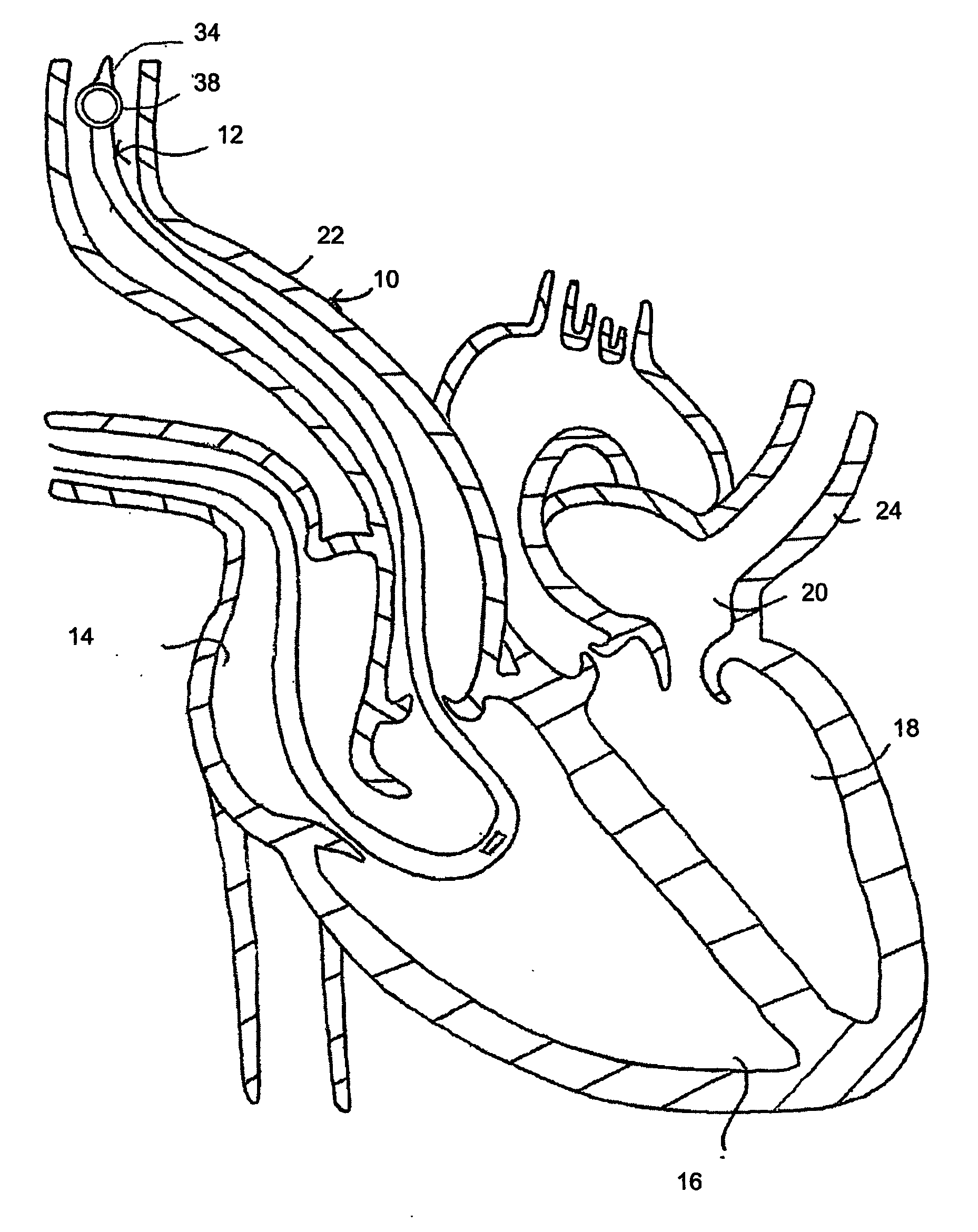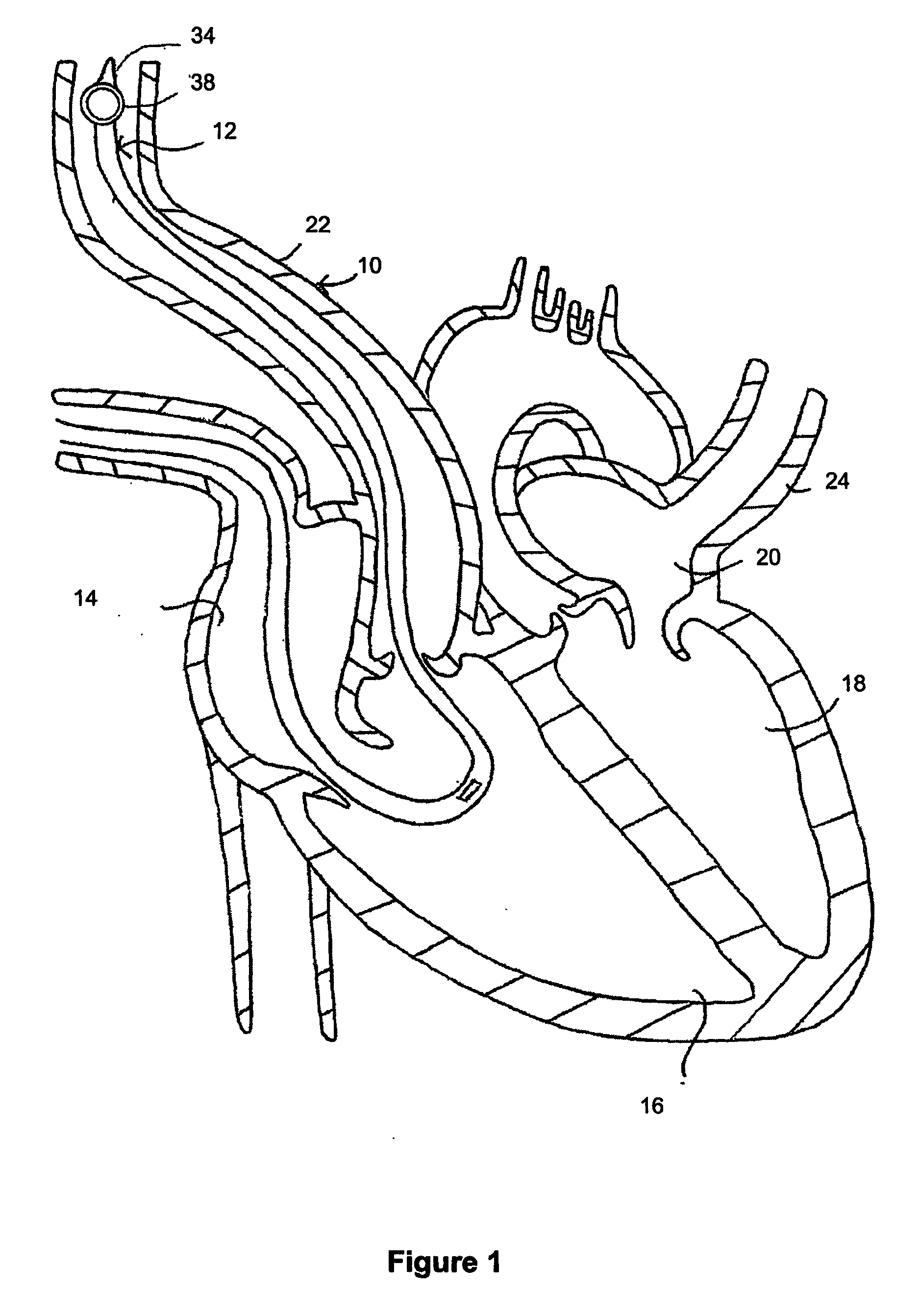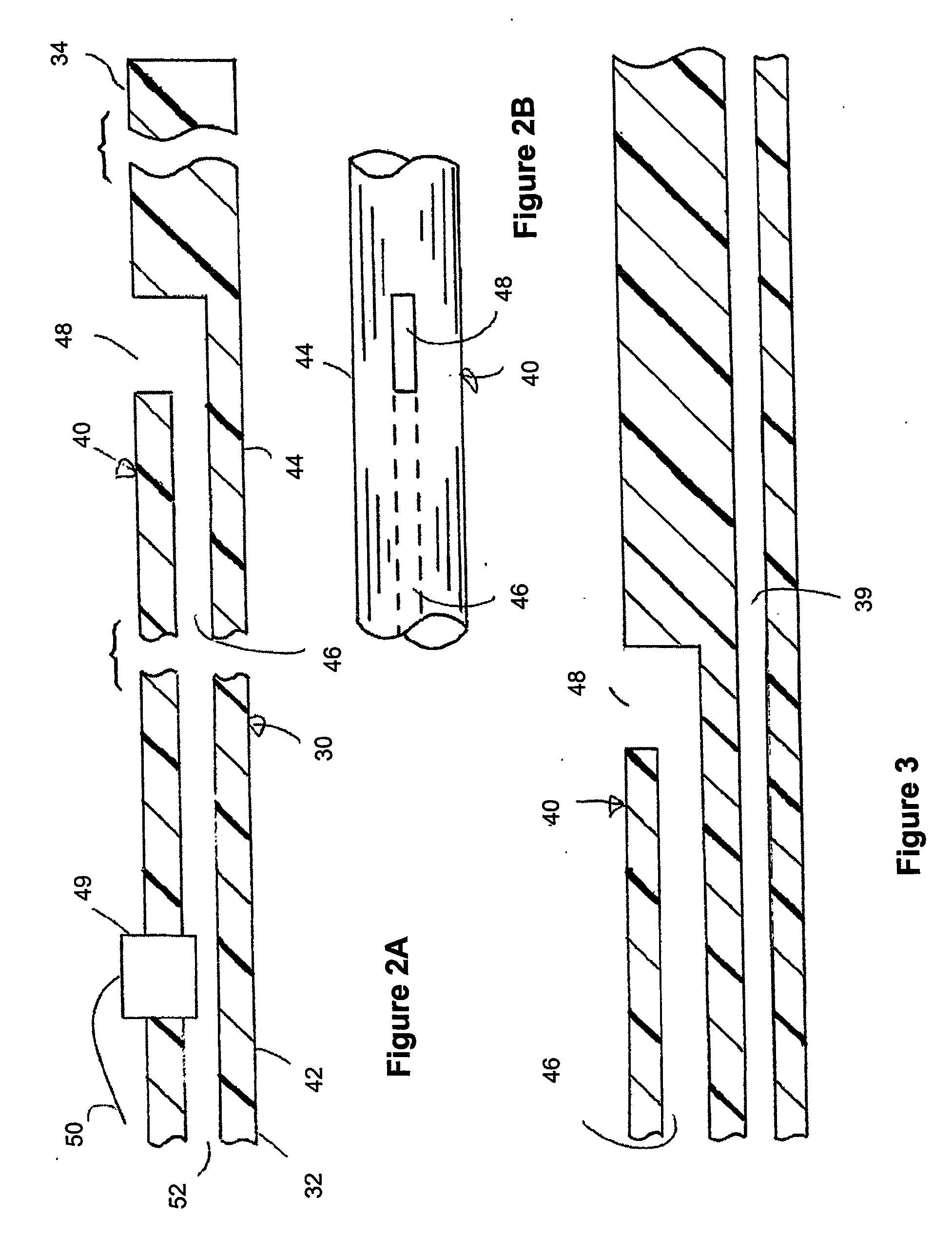Catherter for measuring an intraventricular pressure and method of using same
a catheter and intraventricular pressure technology, applied in the field of catheters for measuring intraventricular pressure, can solve the problems of pulmonary edema or cardiac malfunction, hemodynamic instability, and high cost of echocardiography, and achieve the effect of more cost-effectiveness
- Summary
- Abstract
- Description
- Claims
- Application Information
AI Technical Summary
Benefits of technology
Problems solved by technology
Method used
Image
Examples
examples 1
[0124]FIG. 5, shows the effect of administering 500 ml of a colloid (Pentaspan) in two patients presenting different right intraventricular pressure (RVP) waveforms. The first patient (left-hand side of FIG. 5), who responded to the administration of the administration of the colloid by increasing an ejection volume, presents a normal right intraventricular pressure waveform with a substantially constant measured pressure during the diastole. The second patient, who did not respond to the administration, presents an increasing right intraventricular pressure waveform that increases during the diastole.
example 2
[0125]FIG. 6 illustrates measurements taken in a 75 years-old man suffering from right ventricular outflow tract obstruction after coronary revascularization and aortic valve replacement. The procedure was complicated by difficult weaning from cardiopulmonary bypass requiring intra-aortic balloon counterpulsation after a second failed attempt of weaning from the cardiopulmonary bypass. Panels A and B illustrate a trans-gastric mid-papillary short-axis echographic view (respectively with an echographic image and a segmented model obtained from the echographic image) revealing a dilated and hypertrophied right ventricle (RV). Unexplained acute right heart failure was present without pulmonary hypertension. As shown in panel C, the pulmonary artery pressure (Ppa) was 34 / 22 mmHg and right atrial pressure 20 mmHg. However a significant systolic pressure gradient between the right intraventricular pressure (Prv) and the pulmonary artery was present. (LV: left ventricle, Pa; arterial press...
example 3
[0130]FIG. 9 shows a hemodynamic and transesophageal echocardiographic evaluation of a 46 years-old woman scheduled for aortic valve endocarditis. Despite a pulmonary artery pressure (Ppa) of 34 / 16 mmHg and pulmonary vascular resistance index (PVRI) at 286 dyn.s.cm-5 m-2, this patient had abnormal right intraventricular pressure (Pvr) diastolic filling waveform characterized by a rapid upstroke (Panel A illustrating the right intraventricular pressure waveform) and abnormal S / D ratio<1 in the pulmonary (panel B) and hepatic (panel C) venous flow obtained from Doppler imaging consistent with both left and right ventricular diastolic dysfunction. In addition a dilated right atrium (RA) and right ventricle (RV) were present without significant tricuspid regurgitation in a mid-oesophageal right ventricular view (panel D, which is a an echocardiographic image).
[0131] The mean arterial (MAP) to mean pulmonary artery pressure (MPAP) ratio was 65 / 23 or 2.8. Weaning from cardiopulmonary byp...
PUM
 Login to View More
Login to View More Abstract
Description
Claims
Application Information
 Login to View More
Login to View More - R&D
- Intellectual Property
- Life Sciences
- Materials
- Tech Scout
- Unparalleled Data Quality
- Higher Quality Content
- 60% Fewer Hallucinations
Browse by: Latest US Patents, China's latest patents, Technical Efficacy Thesaurus, Application Domain, Technology Topic, Popular Technical Reports.
© 2025 PatSnap. All rights reserved.Legal|Privacy policy|Modern Slavery Act Transparency Statement|Sitemap|About US| Contact US: help@patsnap.com



